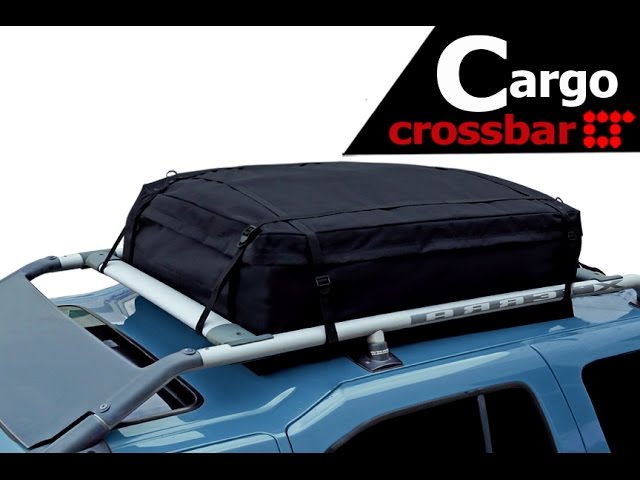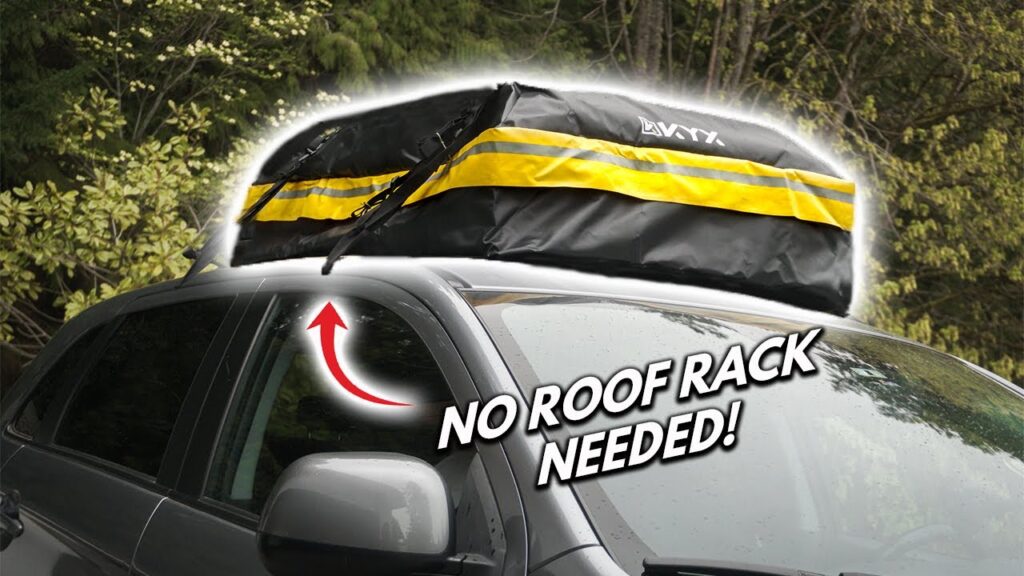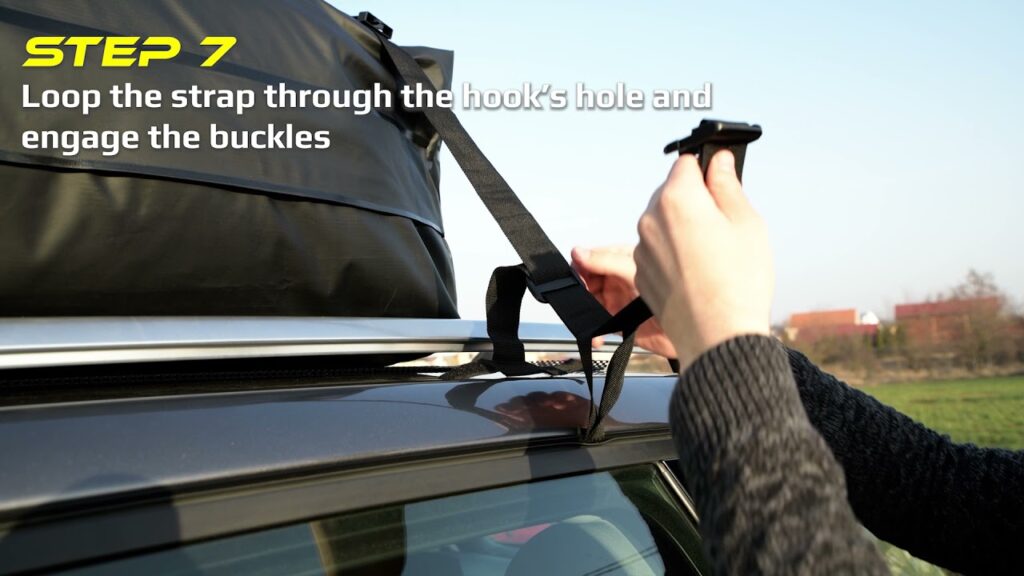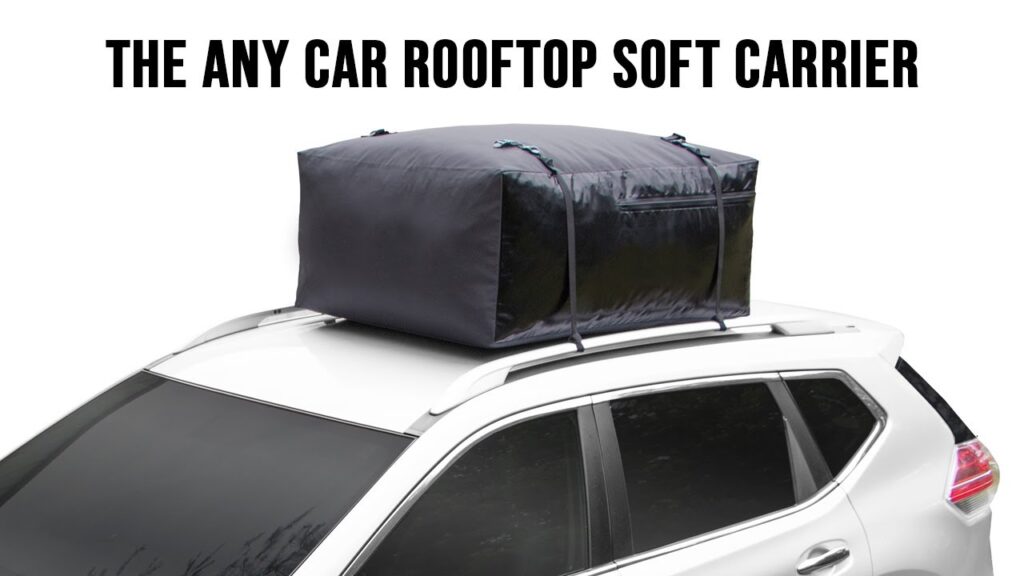Imagine you’re planning a road trip and need extra storage space for all your belongings. That’s where the Carpod Cargo Bag comes in handy. This innovative product allows you to easily attach it to the roof of your car, providing a secure and spacious storage solution. In this article, we will explore the simple steps on how to attach the Carpod Cargo Bag to your car roof, ensuring a stress-free and organized journey. Say goodbye to cramped spaces and hello to hassle-free travel with the Carpod Cargo Bag!

This image is property of i.ytimg.com.
Choosing the Right Carpod Cargo Bag
When it comes to choosing the right Carpod cargo bag for your car roof, there are a few factors you should consider. The first is the size and capacity of the bag. You’ll want to make sure it is large enough to accommodate the items you plan to transport, but not so big that it overhangs the sides of your roof. It’s also important to check the weight capacity of the bag to ensure it can safely carry your belongings.
Another important consideration is the durability and weather resistance of the cargo bag. You want a bag that is made from high-quality materials and can withstand various weather conditions, such as rain, snow, and UV exposure. Look for bags that are made from waterproof or water-resistant materials to keep your items dry and protected during transportation.
Lastly, you need to ensure that the Carpod cargo bag you choose is compatible with your car roof. Different bags may have different attachment methods, so it’s essential to check if it can be securely mounted to your car. Some bags are designed to be used with roof racks or crossbars, while others can be directly attached to the roof itself. Consider your car’s roof configuration and choose a bag that is compatible with it.
Preparing Your Car Roof
Before you can install the Carpod cargo bag, you’ll need to prepare your car roof. The first step is to clean the roof surface thoroughly. Remove any dirt, dust, or debris that may hinder the bag’s attachment or cause scratches. Use a gentle car-cleaning solution and a soft cloth or sponge to clean the roof, ensuring a clean and smooth surface for the cargo bag.
Next, check if there are any existing roof racks or crossbars on your car roof. These are typically used to provide a secure base for mounting the cargo bag. If your car doesn’t already have roof racks or crossbars, you may need to purchase and install them. Consult your car’s manual or a professional for guidance on choosing the right racks or crossbars for your car model.
Installing the Carpod Carrier
After preparing your car roof, it’s time to install the Carpod carrier. Position the carrier on the roof, ensuring it is centered and aligned with the roof racks or crossbars. This will ensure a balanced distribution of weight and optimal stability during transportation.
Next, open the carrier and locate the straps or buckles used to secure it to the roof. Ensure the straps are properly adjusted and securely fastened to the roof racks or crossbars. Take your time to double-check the tightness of the straps, as a loose carrier can be hazardous while driving.
Finally, adjust the straps as needed to ensure a tight fit. The carrier should be securely attached to the roof and should not move or shift when pressure is applied. A snug fit is crucial for a safe and secure transportation of your belongings.
Placing the Cargo Bag on the Carpod Carrier
With the Carpod carrier securely installed, it’s time to place the cargo bag on top. Open the cargo bag and ensure it is fully extended. Lay the bag flat on the carrier, aligning it with the edges and corners of the carrier for a proper fit.
Once the bag is positioned correctly, secure it using the provided straps or clips. Follow the manufacturer’s instructions to ensure proper attachment. Make sure the bag is evenly secured and that there are no loose or dangling straps that could cause damage or become tangled during transportation.

This image is property of i.ytimg.com.
Securing the Cargo Bag to the Car Roof
To ensure the cargo bag doesn’t shift or detach from the car roof while driving, it’s important to secure it properly. Attach the bag’s straps to the roof racks or crossbars, ensuring they are looped around securely. Adjust the straps as needed to remove any slack, but be careful not to overtighten, as this can place unnecessary strain on the bag and its attachment points.
Take a moment to double-check the tightness of the straps before hitting the road. Give them a gentle tug to ensure they are securely fastened and won’t come loose during transit. It’s always better to be safe than sorry, so take the time to ensure a secure attachment.
Checking for Stability and Clearance
Before you set off on your journey, it’s important to check for the stability and clearance of the cargo bag. Ensure the bag is still securely attached and doesn’t shift or move when pressure is applied. Give it a gentle shake to test for any signs of instability. If the bag feels loose or wobbly, double-check the straps and attachments to ensure everything is properly secured.
Additionally, check for proper clearance with your car’s height restrictions. The cargo bag should not exceed the recommended height limit specified by your car manufacturer. Exceeding this limit may result in damage to the bag, your car, or other objects you encounter during your travels. Always prioritize safety and adhere to the recommended guidelines to prevent any accidents or mishaps.

This image is property of media.pelican.com.
Securing Loose Straps and Excess Material
To prevent any loose straps from flapping in the wind or becoming tangled, bundle them together and tie them securely. This will not only eliminate any potential distractions while driving but also protect the straps from wear and tear. If there is any excess material hanging from the cargo bag, tuck it inside the bag to prevent it from flapping and possibly causing damage.
Additionally, secure any loose ends of the straps to prevent them from coming undone during transit. Taping or tying them down will keep everything neat and tidy, ensuring a safe and uninterrupted journey.
Protecting the Cargo Bag and Contents
To provide extra protection for your cargo bag and its contents, consider covering the bag with a weatherproof tarp. This additional layer will shield the bag from rain, snow, and other external elements. Secure the tarp using bungee cords or additional straps, ensuring it is tightly fastened to prevent it from coming loose during the journey.
Regularly check and tighten the straps during your trip. The constant movement and vibrations when driving can gradually loosen the straps, so it’s important to periodically inspect and readjust them to maintain a secure attachment. Don’t overlook this step, as loose straps can compromise the safety and stability of the cargo bag.

This image is property of i.ytimg.com.
Driving with the Carpod Cargo Bag
When driving with the Carpod cargo bag on your car roof, there are a few things to keep in mind. First, periodically check the bag and straps during your journey to ensure they remain secure and tight. A quick visual inspection can help identify any potential issues or looseness that needs to be addressed.
Drive at a moderate speed and avoid sudden maneuvers, such as sharp turns or abrupt braking. The extra weight and wind resistance of the cargo bag can affect your car’s handling, so it’s important to drive cautiously and adjust your driving style accordingly. Maintaining a moderate speed will help ensure a smooth and safe journey.
Be mindful of the increased height and wind resistance caused by the cargo bag. Particularly when driving on highways or in windy conditions, you may experience more wind drag and decreased fuel efficiency. Adjust your driving accordingly and be prepared for a slightly different driving experience with the cargo bag installed.
Conclusion
Attaching a Carpod cargo bag to your car roof is a fairly straightforward process, but it does require careful consideration and attention to detail. By following the steps outlined in this article, you can ensure a safe and secure attachment of the cargo bag and enjoy worry-free transportation of your belongings.
Remember to choose the right size and capacity of the bag, check for durability and weather resistance, and ensure compatibility with your car roof. Prepare your car roof by cleaning it and installing roof racks or crossbars if necessary. Properly install the Carpod carrier, position and secure the cargo bag, and check for stability and clearance.
Take the time to secure any loose straps and excess material, protect the bag with a weatherproof tarp, and regularly check and tighten the straps during your journey. Drive with caution, check the bag and straps periodically, and be mindful of the increased height and wind resistance.
By following these steps and prioritizing safety and secure attachment, you can enjoy a smooth and stress-free experience when using a Carpod cargo bag on your car roof. Happy travels!

This image is property of i.ytimg.com.

